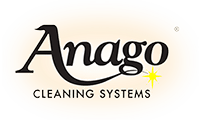
No one wants to visit an unsanitary healthcare facility, especially when feeling sick and vulnerable. It’s important to keep all public places clean, but this practice is especially crucial for hospitals. In a building where sick people visit and/or stay, strict cleaning measures are required to prevent illnesses from spreading to more patients. Terminal cleaning services are scheduled at hospitals daily; nurses and doctors are simply too busy to perform these tasks themselves. A terminal clean is needed in rooms where there’s a risk of pathogen transmission.
Why do hospitals need terminal cleaning services?
Despite the name, this service isn’t as morbid as it may sound—it’s necessary to protect the health of patients in healthcare facilities. Countless people go in and out of hospitals every day, from staff members to patients and their families. Pathogen transmission is a serious risk in operating rooms and other units; if it spreads, it is referred to as a HAI (nosocomial or hospital-acquired infection), which is contracted by patients during a hospital stay. In Canada, it’s estimated that 1 in 9 hospital patients get an HAI. To reduce these numbers, healthcare facilities hire terminal cleaning services to completely disinfect the building.
What’s involved in a terminal cleaning service?
The cleaners wear PPE (personal protection equipment) to prevent the spread of infections or viruses. PPE includes face shields, gloves, masks, and boots. Once the cleaners are suited up, and they’ve applied hand sanitizer, they’re ready to begin the work.
A terminal cleaning typically begins with the cleaner placing a sign on the door to indicate that disinfection is underway. Bed linens are removed and placed into a hamper. If any of the patient’s belongings have been left behind, they are reported to a staff member.
Cleaners follow a specific routine of tasks to avoid cross-contamination. They move from cleaner to dirtier areas. First, any detachable objects are removed and separated for disinfection. Low-touch surfaces are cleaned before high-touch areas like doorknobs, appliances, and counters. These areas are wiped down with a disinfectant to kill viruses. The goal of a terminal cleaning is to eliminate all germs from floor to ceiling, including light fixtures, air vents, and floors. Waste materials are disposed of appropriately and safely. Patient bathrooms are disinfected from top to bottom—the restrooms are always cleaned last.
Before moving on to a different room, cleaners change their gloves and cleaning cloths. They also perform a final check-up on the room to make sure every surface, piece of equipment, and touchpoint has been cleaned. Once they’re satisfied with their work, the room is deemed ready for the next patient.
In operating areas, patients are especially vulnerable to infections; these rooms require an eye for detail during disinfection. Since the outbreak of COVID-19, many hospitals have dedicated wards or isolation areas for sick patients. Terminal cleaning services are used to contain the spread of the virus.
The importance of terminal cleaning services in hospitals cannot be overstated. When areas are not disinfected, patients will get sick. Many people in hospitals are immunocompromised, elderly, or fighting for their lives; acquiring another infection puts them more at risk. Anago offers workplace janitorial services. To keep the patients and staff at your healthcare facility safe, hire our terminal cleaning services to clean, sanitize, and disinfect high-risk areas.
